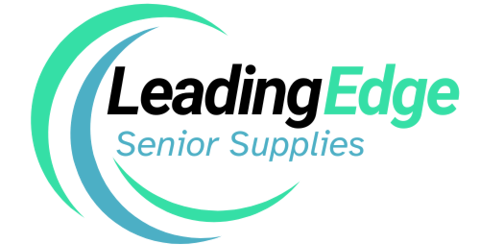Why Every Senior Should Have A Pulse Oximeter At Home
Why Every Senior Should Have A Pulse Oximeter At Home
Aging brings with it not only wisdom but also new responsibilities toward maintaining health. For seniors, even minor fluctuations in breathing or heart function can signal significant underlying issues. That’s why having the right health tools at home can make all the difference between uncertainty and peace of mind.
One of the simplest yet most powerful of these tools is the pulse oximeter. Compact, easy to use, and incredibly effective, it has become a vital companion for seniors who wish to monitor their health safely from home.
The pulse oximeter is more than just a small device that clips onto the finger—it’s a window into how well the body is functioning. For seniors who may live alone, have respiratory or heart conditions, or simply want to stay proactive, this little device can provide reassurance and early detection that truly saves lives.
Understanding What a Pulse Oximeter Does
A pulse oximeter measures two essential indicators of health: oxygen saturation and pulse rate. Oxygen saturation, displayed as SpO₂, tells how much oxygen the blood is carrying from the lungs to the rest of the body. A healthy reading usually falls between 95 and 100 percent. If levels drop below normal, it could signal that the body is struggling to get enough oxygen—a condition that can quickly become serious if left unnoticed.
For seniors, this type of monitoring is invaluable. Many chronic conditions common in older adults, such as COPD, heart disease, and sleep apnea, directly affect oxygen levels. Even illnesses like pneumonia or COVID-19 can cause a silent decrease in oxygen before other symptoms appear. The pulse oximeter gives seniors and caregivers real-time information about what is happening inside the body without the need for invasive testing.
Why Oxygen Monitoring Is So Crucial For Seniors
As the body ages, the efficiency of the lungs and heart gradually declines. Muscles involved in breathing weaken, lung tissue becomes less elastic, and oxygen exchange may not occur as effectively. Seniors often don’t realize their oxygen levels are dropping because the symptoms—like fatigue, confusion, or shortness of breath—can appear gradually. By the time these signs are recognized, oxygen deprivation may already be significant.
The ability to check oxygen levels instantly allows for timely action. If a senior’s SpO₂ reading begins to fall, it signals that medical attention may be needed. This early awareness can prevent complications such as fainting, heart strain, or respiratory failure. For caregivers, it’s a reliable tool that provides reassurance between doctor visits. The information gathered by a pulse oximeter can also help healthcare professionals adjust medications or treatment plans with greater precision.
Empowering Seniors Through Self-Monitoring
Independence is one of the most valued aspects of aging gracefully. Seniors often express a strong desire to maintain control over their own health and routines. The pulse oximeter helps them do exactly that. It gives them a sense of empowerment by allowing them to take an active role in monitoring their well-being. Each reading reinforces a feeling of awareness and confidence, transforming what could be anxiety into reassurance.
For those managing chronic conditions, daily monitoring becomes a form of self-advocacy. Seniors can track trends in their oxygen levels and recognize when something feels different. This ability to connect physical sensations with measurable data builds confidence and encourages open conversations with healthcare providers. Instead of reacting to problems after they worsen, seniors can address concerns early, protecting both their health and independence.
The Emotional Security It Provides
Beyond its medical value, the emotional benefit of owning a pulse oximeter cannot be overstated. Many seniors experience anxiety about their health, especially those with breathing difficulties or heart issues. Waking up in the night short of breath or feeling lightheaded can be frightening. Having the ability to check oxygen levels immediately offers comfort and clarity.
For families and caregivers, it also provides peace of mind. Knowing that their loved one can assess their health at any time reduces constant worry. It creates a sense of safety, particularly for seniors living alone. This emotional reassurance leads to improved overall well-being, as reduced stress contributes to better sleep, stronger immunity, and a more positive outlook on life.
Integrating The Pulse Oximeter Into Daily Health
Making the pulse oximeter part of a daily routine can be simple yet transformative. Seniors can take readings after light exercise, during rest, or whenever they feel tired. Over time, this practice helps them understand what “normal” feels like for their body. With that awareness, they can quickly recognize when something feels off.
Healthcare professionals increasingly recommend pulse oximeters as part of home-based care plans for seniors. Their readings help identify changes in oxygen trends that could indicate respiratory infections, medication reactions, or cardiovascular strain. The device’s portability makes it ideal for travel or outings, ensuring that seniors can always stay informed about their health.
A Small Device With Life-Changing Impact
In an era where technology often feels complex or intimidating, the pulse oximeter stands out for its simplicity and effectiveness. It doesn’t require extensive setup or technical knowledge—just a moment of attention and care. That small act of checking oxygen levels can prevent emergencies, guide treatment, and offer priceless reassurance.
For seniors striving to live independently while managing age-related challenges, the pulse oximeter represents more than a medical device—it symbolizes empowerment. It is a bridge between awareness and safety, between uncertainty and confidence. By integrating it into daily life, seniors can protect their health, maintain their independence, and find peace in knowing that their body’s signals are never ignored.
Ultimately, the pulse oximeter is not just about numbers on a screen—it’s about extending quality of life. It’s about giving seniors the tools they need to live with freedom, security, and a renewed sense of control over their health every single day.

